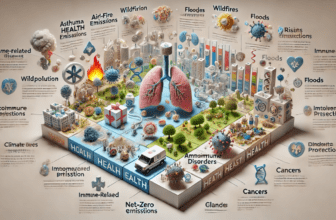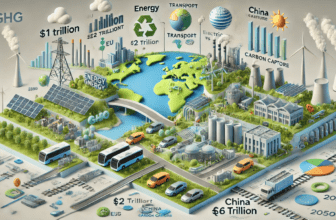Peatland Restoration & CO₂ Sequestration


1. Introduction
Peatlands are essential for the global carbon (C) cycle, acting as long-term carbon sinks under natural, waterlogged conditions. However, peat extraction and drainage disrupt these ecosystems, turning them into net carbon dioxide (CO₂) sources and significantly increasing greenhouse gas (GHG) emissions. Restoring degraded peatlands is a crucial strategy for mitigating climate change.
This study examines the Bois-des-Bel (BDB) bog in eastern Canada (near Rivière-du-Loup, Québec), which was vacuum-harvested for peat from 1972 to 1980, leaving about 2 meters of residual peat. In 1999, the site was restored using the Moss Layer Transfer Technique (MLTT) to re-establish Sphagnum moss and raise the water table. More about peatlands’ role in carbon storage can be found in the Wikipedia article on Peatlands.
Between 2013 and 2016 (14–16 years post-restoration), researchers collected meteorological and eddy covariance flux data every 30 minutes to measure net ecosystem CO₂ exchange (NEE), water table fluctuations, soil temperature profiles, and surface energy fluxes. Using the CoupModel, they simulated CO₂, water, and heat fluxes at sub-daily intervals and extended their analysis to assess climate variability from 1994 to 2021, including potential future changes. Detailed information about the Bois-des-Bel peatland restoration project is available through the IUCN UK Peatland Programme.
2. Study Objectives
The study focused on four key objectives:
- Validating the CoupModel for restored peatlands
- Assessing its accuracy in simulating NEE, energy fluxes, soil temperature profiles, and water table depth. Learn more in the study Simulating ecosystem carbon dioxide fluxes and their associated source components in a restored peatland.
- Examining the impact of acrotelm (new peat layer) thickness
- Simulating peat thicknesses of 20 cm, 30 cm, 40 cm, and 100 cm to evaluate water availability, moss vitality, and CO₂ exchange. Research on the hydrological properties affecting peatland restoration is discussed in The Hydrology of the Bois-des-Bel peatland restoration.
- Exploring interannual climate variability
- Analyzing a 28-year meteorological dataset (1994–2021) to study CO₂ fluxes in wet/cool versus dry/hot years. See Peatland restoration pathways to mitigate greenhouse gas emissions.
- Assessing climate change scenarios
- Testing temperature increases of +1 °C and +2 °C, with ±10% precipitation shifts, to predict future peatland CO₂ balance.
3. Key Challenges and Model Limitations
Despite the CoupModel’s strong performance, some inconsistencies arose:
- Spring thaw timing (“zero-curtain” effect)
- The model generally matches soil temperatures (r² > 0.9) but misaligns spring thaw at 20–80 cm depth by ±10–30 days.
- Spring infiltration vs. measured water table
- The model overestimates spring water table peaks (e.g., suggesting –0.02 m, while measurements show ~–0.08 m).
- Discrepancies with national emission factors
- Canada’s National Inventory Report (NIR) estimates restored peatlands as a net CO₂ source (+2.07 t CO₂–C ha⁻¹ yr⁻¹), while the study finds a net sink of –1.0 ± 0.6 t CO₂–C ha⁻¹ yr⁻¹.
4. Influencing Factors on CO₂ Exchange
Several factors impact CO₂ uptake and emissions:
- Water Table Depth (WT)
- Optimal range: –0.05 to –0.20 m (supports Sphagnum growth, limits decomposition).
- Below –0.25 m: Dry moss layers reduce NEE uptake, potentially flipping to net emissions.
- Soil Heat and the Zero-Curtain Effect
- Frozen peat delays CO₂ release; spring thaw timing shifts can impact seasonal NEE.
- Acrotelm Thickness
- 20–40 cm: Strong CO₂ uptake (–90 to –100 g C m⁻² yr⁻¹).
- 100 cm: Drier surface conditions reduce uptake by 30–60 g C m⁻² yr⁻¹.
- Climate Variability (1994–2021 simulations) Ecological resilience of restored peatlands to climate change.
- Mean annual NEE: –101 ± 64 g C m⁻² yr⁻¹.
- Range: –219 g C m⁻² yr⁻¹ (wet years) to +54 g C m⁻² yr⁻¹ (dry years).
- Future Climate Projections (+2 °C, –10% precipitation)
- NEE reduction by ~16%, but still a net CO₂ sink (~–95 g C m⁻² yr⁻¹).
5. Implications for Climate Policy and Carbon Accounting
- Restoration success
- Within 15 years, BDB functions as a carbon sink comparable to pristine bogs but remains vulnerable to dry years.
- Hydrological management is critical
- Water table regulation (e.g., blocking ditches) is essential to maintain CO₂ uptake capacity.
- Miscalculated carbon credits
- Canada’s NIR overestimates emissions from restored bogs.
- The IPCC Tier 1 default factor (–0.23 t C ha⁻¹ yr⁻¹) underestimates the real sink potential (–1.01 t C ha⁻¹ yr⁻¹).
- Economic and policy incentives
- A stable CO₂ sink of ~–1 t CO₂–C ha⁻¹ yr⁻¹ could justify carbon credits (~–3.7 t CO₂ eq ha⁻¹ yr⁻¹).
- Long-term flux monitoring is crucial for accurate climate models and policy decisions.
6. Summary of Key Figures
| Parameter | Observed (2014–2016) | Model Estimate |
|---|---|---|
| Annual NEE (g C m⁻² yr⁻¹) | –90 to –105 | –89 to –120 |
| 1994–2021 Mean NEE | –101 ± 64 | –101 ± 64 |
| Water Table Depth (m) | –0.05 to –0.20 | –0.02 to –0.08 (spring overestimate) |
| Future Scenario (NEE, +2 °C) | –95 g C m⁻² yr⁻¹ | –95 g C m⁻² yr⁻¹ |
| Canada NIR Emissions Factor | +2.07 t CO₂–C ha⁻¹ yr⁻¹ | –1.01 t CO₂–C ha⁻¹ yr⁻¹ |
7. Conclusion
The Bois-des-Bel study provides compelling evidence that well-executed peatland restoration can restore CO₂ uptake within 15 years, given proper water table management. However, reliance on outdated emission factors underestimates the benefits of restoration, impacting climate policy and carbon offset potential.
How do restored peatlands impact CO₂ emissions?
Restored peatlands act as carbon sinks, absorbing more CO₂ than they release, but their efficiency depends on water table levels and climate conditions. Peatland restoration pathways to mitigate greenhouse gas emissions.
How long does peatland restoration take to become a carbon sink?
Under optimal conditions, a restored bog can transition to a net CO₂ sink within 15 years, similar to pristine peatlands. Annual carbon balance of a peatland 10 years following restoration.
Why is water table management crucial for peatlands?
A stable water table prevents peat oxidation and supports Sphagnum growth, ensuring continued CO₂ sequestration. The hydrology of the Bois-des-Bel peatland restoration.
Are current climate policies undervaluing restored peatlands?
Yes. Canada’s National Inventory Report and IPCC Tier 1 factors underestimate their true carbon sink potential, affecting carbon credit incentives. Peatland restoration on Wikipedia.

[00:00:03]
The carbon cycle represents the movement of carbon through land, water, air, and all living things. In wetlands, the amount of carbon exchanged between vegetation, water, soil, and the atmosphere over a specific period of time is called wetland carbon flux. Wetland ecosystems capture sunlight, water, and carbon dioxide from the atmosphere to generate energy through photosynthesis. This process not only supports plant growth but also sequesters carbon within the growing vegetation. Scientists refer to these plants and the carbon they store as biomass.
[00:00:40]
Biomass can become incorporated into soil organic matter through roots, plant litter, and other decomposing biological materials. Boreal peatlands sequester between 10 and 80 grams of carbon per square meter each year. While this may seem like a small amount, these ecosystems span 120 million hectares across Canada—an area larger than many countries—and, in some regions, have been storing carbon for over 10,000 years. Over time, this adds up significantly.
[00:01:14]
However, carbon can also be naturally lost from wetlands in several ways. One key pathway is through atmospheric emissions. When soils are not waterlogged and oxygen is present, microbes in the soil use oxygen to decompose organic material and release carbon dioxide (CO₂) into the atmosphere. In waterlogged, low-oxygen conditions, these microbes instead produce methane (CH₄), a more potent greenhouse gas, which is then emitted into the air.
[00:01:40]
Another pathway of carbon loss is through the movement of water. As water flows in and out of wetlands, it can carry dissolved forms of carbon with it, transporting them elsewhere. Lastly, in some types of wetlands, wildfires can result in the loss of particulate carbon, or soot, as carbon-rich vegetation and soil burn.
[00:01:51]
Together, these various exchanges of carbon are referred to as the net ecosystem carbon balance. If an ecosystem absorbs more carbon from the atmosphere than it emits, it is called a carbon sink. Over the past 10,000 years, Canada’s peatlands have acted as effective carbon sinks, creating a net cooling effect that has helped reduce the impacts of climate change.
[00:02:26]
However, this balance is shifting. Disturbances such as drainage, permafrost thaw, wildfires, and nutrient enrichment are becoming more frequent and intense, leading to substantial increases in carbon emissions from peatlands. These disruptions can turn peatlands into carbon sources, meaning they emit more carbon into the atmosphere than they absorb.
By rewetting drained peatlands, preventing further degradation, applying sustainable land-use practices, and supporting Indigenous-led and science-based conservation efforts, we can ensure that these carbon-rich ecosystems continue to function as carbon sinks long into the future.








